15 Fast Facts About Formula One (F1)
Are you ready to buckle up and speed into the thrilling world of Formula One? For over seven decades, F1 has been the pinnacle of motorsport, capturing the hearts of fans around the world with its high-speed racing, cutting-edge technology, and iconic drivers.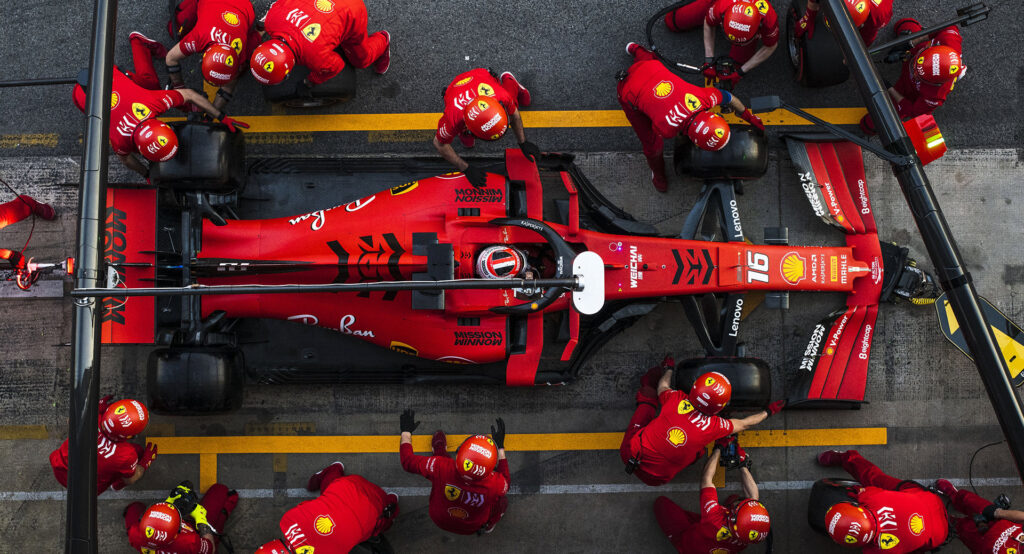
Formula One (F1) cars are among the fastest racing cars in the world.
1 They are designed for high speeds and agility, with powerful engines, aerodynamic bodies, and advanced suspension systems.
F1 cars can reach speeds of up to 230 mph (370 km/h) on straightaways, depending on the track and other conditions. However, their average speed during a race is usually lower, around 130-150 mph (209-241 km/h), because the cars need to navigate through corners and other obstacles on the track.
The top speed of an F1 car is determined by various factors, such as the horsepower of the engine, the aerodynamics of the car, and the weight of the vehicle. F1 cars typically have engines that can produce over 900 horsepower, which allows them to accelerate from 0 to 60 mph (97 km/h) in under 2 seconds.
The weight of an F1 car, including the driver, must be at least 740 kg (1,630 lbs) according to FIA regulations.
2 This minimum weight is intended to ensure safety and fairness in the sport.
In terms of cost, F1 cars are among the most expensive racing cars in the world. The cost of an F1 car can vary depending on a range of factors, including the team, the season, and the level of technology and innovation involved. However, it’s not uncommon for an F1 car to cost over $10 million, with some estimates putting the cost at around $12-15 million.
The high cost of F1 cars is largely due to the advanced technology and materials used in their construction, as well as the extensive research and development that goes into their design. F1 teams invest heavily in their cars to gain a competitive edge, and this often involves using the latest engineering techniques and cutting-edge materials to maximize performance while minimizing weight.
The Formula One (F1) season typically consists of around 20 races held in different countries around the world.
3 The number of races may vary slightly from season to season, but it is usually around this number.
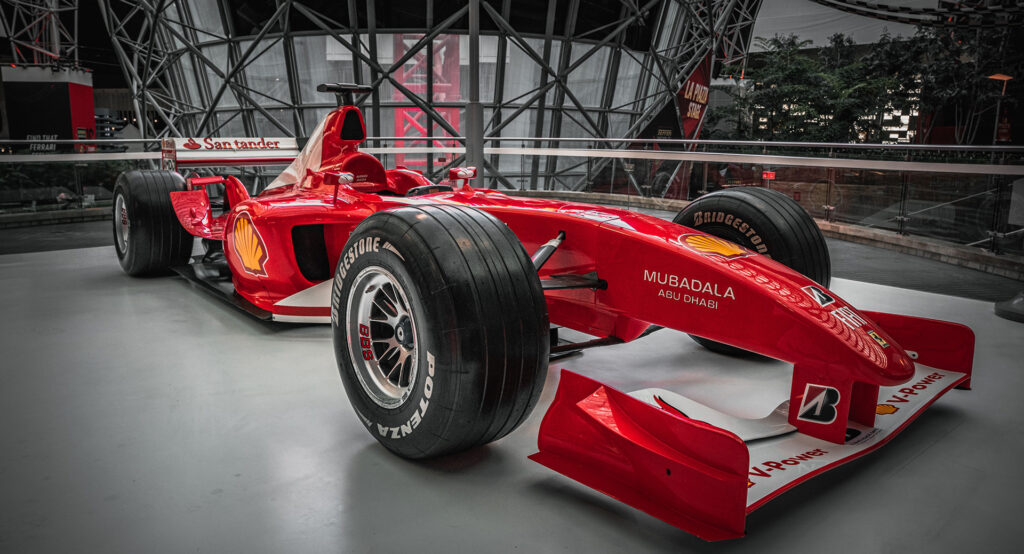 The F1 season typically starts in March or April and ends in November or December. The races are held on a variety of tracks, including traditional circuits like Monza in Italy and Silverstone in the UK, as well as street circuits like Monaco and Singapore. The races are also held in different countries around the world, from Australia to Brazil to Abu Dhabi.
The F1 season typically starts in March or April and ends in November or December. The races are held on a variety of tracks, including traditional circuits like Monza in Italy and Silverstone in the UK, as well as street circuits like Monaco and Singapore. The races are also held in different countries around the world, from Australia to Brazil to Abu Dhabi.
Each race weekend typically consists of practice sessions on Friday and Saturday, followed by qualifying on Saturday to determine the starting grid for the race on Sunday. The race itself usually lasts around 2 hours and involves a set number of laps around the track.
The drivers earn points based on their finishing position in each race, with the driver who accumulates the most points over the course of the season being crowned the World Drivers’ Champion. The teams also earn points based on the finishing position of their drivers, with the team that accumulates the most points being crowned the World Constructors’ Champion.
F1 drivers must endure very high G-forces during races, particularly during high-speed corners and braking zones.
4 G-forces are a measure of the acceleration experienced by an object, expressed in multiples of the acceleration due to gravity (1G). During an F1 race, drivers can experience G-forces of up to 5G, which is five times the force of gravity. This means that a driver weighing 70 kg (154 lbs) would feel like they weigh 350 kg (770 lbs) during high-G maneuvers.
The high G-forces experienced by F1 drivers can put a significant strain on their bodies, particularly their neck and core muscles, which must work hard to keep their heads and bodies stable under the forces. To prepare for these demands, F1 drivers undergo extensive physical training, including strength and endurance training, to build up their fitness and stamina.
In addition to physical training, F1 drivers also use specialized equipment, such as custom-fitted seats and steering wheels, to help them cope with the G-forces. They also wear specialized helmets and other protective gear to help prevent injuries in the event of a crash or other accident.
The F1 engine is one of the most powerful in the world, with a V6 turbocharged hybrid engine producing around 900 horsepower.
5 Since 2014, F1 engines have been required to be V6 turbocharged hybrid engines, which use both fuel and electrical power to generate the required power output. The hybrid system includes an energy recovery system (ERS), which uses kinetic energy from the car’s braking system to generate electrical power that can be used to boost the engine’s power output.
The current F1 engine regulations allow for a maximum power output of around 950 horsepower, although the actual power output may vary depending on the specific engine and team. The engines are also required to meet strict fuel efficiency and emissions standards, which has led to significant advancements in engine technology and hybrid systems.
In addition to producing high levels of power, F1 engines are also incredibly lightweight and compact, weighing around 145 kg (320 lbs) and measuring less than half a meter in length. This allows for maximum performance and agility, as well as improved fuel efficiency and handling.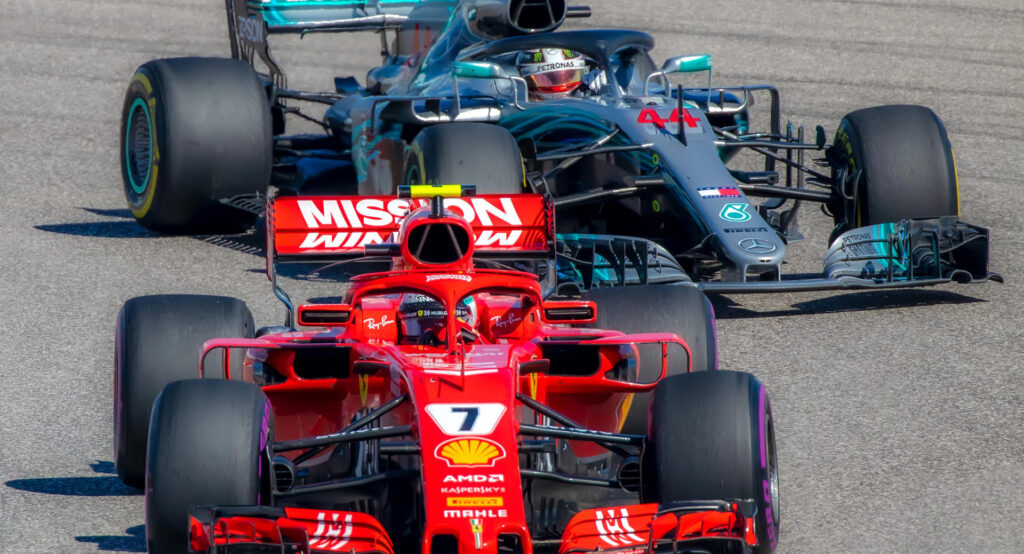
The Monaco Grand Prix is often referred to as the “jewel in the crown” of the Formula One (F1) calendar.
6 It is known for being one of the most prestigious and glamorous races in motorsport.
The Monaco Grand Prix is also one of the slowest races on the F1 calendar, with an average speed of just 78 mph (125 km/h). This is because the race is held on the streets of Monte Carlo, which is a narrow and winding circuit with many tight corners and limited overtaking opportunities. The circuit is also lined with walls and barriers, which makes it particularly challenging for the drivers.
Despite its relatively slow speed, the Monaco Grand Prix is still considered one of the most challenging and exciting races in F1. The combination of high skill and precision required from the drivers, the tight and unpredictable nature of the circuit, and the glamorous setting all contribute to the unique appeal of the race.
The pit crew in Formula One (F1) are highly trained and skilled individuals who work together to perform lightning-fast pit stops during the races.
7 One of the key tasks of the pit crew is to change the tires on the car, which can be done in less than two seconds if everything goes smoothly. This requires incredible precision and teamwork, as the crew must work together to jack up the car, remove the old tires, and replace them with new ones in a matter of seconds.
In addition to changing tires, the pit crew may also refuel the car, make adjustments to the wings or suspension, and clean the driver’s visor. All of these tasks must be performed as quickly and efficiently as possible to minimize the time spent in the pit lane and maximize the car’s performance on the track.
The pit crew typically consists of around 20 individuals, each with their own specific role and responsibilities. This includes tire changers, who are responsible for changing the tires; jack men, who operate the hydraulic jacks used to lift the car; and mechanics, who make any necessary adjustments to the car. The pit crew also includes a team manager, who coordinates the activities of the crew and communicates with the driver over the radio.
F1 drivers burn around 1,500 calories per race, the equivalent of running a half marathon.
8 This is due to the physical demands of driving an F1 car, which requires a high level of strength, endurance, and mental focus. F1 drivers must be able to maintain intense concentration and focus for the duration of the race, which can last for several hours in some cases.
In addition to the mental demands, F1 drivers also experience high levels of physical stress during the race. They must withstand high levels of G-forces, which can put a strain on the neck and upper body muscles, and they must also be able to maintain a high heart rate for an extended period of time.
All of these factors contribute to a high calorie burn rate during the race, with some drivers reportedly burning the equivalent of running a half marathon during a single race. To prepare for the demands of racing, F1 drivers typically follow rigorous training and nutrition programs, which help to build their strength and endurance and maintain their energy levels throughout the race.
The steering wheel in a Formula One (F1) car is a highly sophisticated piece of technology that allows the driver to control a wide range of functions and settings on the car.
9 Modern F1 steering wheels typically feature over 20 buttons and dials, each of which controls a specific aspect of the car’s performance. This includes settings for the engine, brakes, suspension, and tires, as well as controls for the radio, dashboard display, and other communication devices.
Some of the specific functions that can be controlled using the F1 steering wheel include:
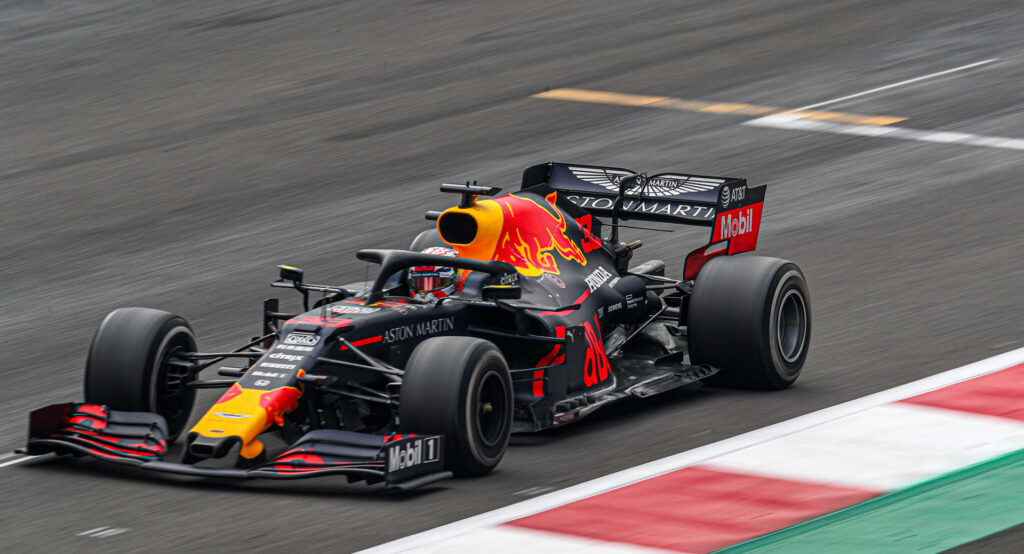 Engine modes: F1 cars have multiple engine modes that can be adjusted to provide different levels of power and fuel efficiency. The driver can switch between these modes using buttons on the steering wheel.
Engine modes: F1 cars have multiple engine modes that can be adjusted to provide different levels of power and fuel efficiency. The driver can switch between these modes using buttons on the steering wheel.
Brake balance: The brake balance can be adjusted to distribute the braking force between the front and rear wheels. This is important for optimizing the car’s performance during braking.
Differential settings: The differential controls how power is distributed between the two rear wheels, and can be adjusted to optimize traction and handling.
DRS: The Drag Reduction System (DRS) is a feature that reduces the drag on the car, allowing it to go faster on straightaways. The driver can activate DRS using a button on the steering wheel.
KERS/Hybrid boost: F1 cars use a Kinetic Energy Recovery System (KERS) or hybrid system to store energy from braking and use it to provide a boost of power. The driver can activate this boost using buttons on the steering wheel.
Overall, the F1 steering wheel is a crucial tool that allows the driver to fine-tune the car’s performance and respond quickly to changing conditions on the track. It requires a high level of skill and knowledge to use effectively, and is an essential part of any successful F1 team.
The F1 halo is a safety device that was introduced to Formula One (F1) cars in 2018.
10 It is designed to protect the driver’s head from flying debris and other objects that may strike the car during a race.
The halo is a titanium structure that sits above the driver’s head and is supported by three pillars that are attached to the car’s chassis. The structure is designed to deflect objects away from the driver’s head and to provide a protective barrier in the event of a crash.
One of the key features of the F1 halo is its strength and durability. It is designed to withstand significant impacts and has been tested to ensure that it can withstand the weight of a London double-decker bus.
Despite initial concerns about the impact of the halo on driver visibility, the device has been well-received by drivers and has proven to be an effective safety measure. It has been credited with potentially saving the lives of several drivers who have been involved in accidents since its introduction.
Overall, the F1 halo is a crucial safety device that has helped to improve the safety of Formula One racing and to protect drivers from potentially life-threatening injuries.
Michael Schumacher holds the record for the most F1 world championships, with seven titles to his name.
11 Schumacher’s first world championship came in 1994, when he won the title with the Benetton team. He went on to win the championship again in 1995, before moving to Ferrari in 1996. With Ferrari, Schumacher dominated the sport, winning five consecutive world championships from 2000 to 2004.
Schumacher’s seven world championships and 91 Grand Prix victories are both records that have yet to be broken. He is widely regarded as a pioneer in the sport, and his success helped to popularize F1 around the world.
In 2013, Schumacher suffered a serious head injury while skiing, and he has since been in a coma-like state. The world continues to follow his progress and hopes for his eventual recovery.
The F1 trophy, known as the Drivers’ Championship trophy, is made of solid silver and weighs over 35 pounds.
12 The Drivers’ Championship trophy is indeed made of solid silver and weighs over 35 pounds (16 kg). It features a design that is meant to evoke the speed and excitement of Formula One racing, with a globe and a pair of wings atop a pole.
The trophy is presented to the driver who accumulates the most points over the course of the season. Points are awarded based on the driver’s finishing position in each race, with higher point values awarded to drivers who finish in the top few positions.
Winning the Drivers’ Championship is considered one of the highest honors in motorsports, and the trophy is a symbol of the driver’s skill and dominance over the course of the season. Drivers who win the championship multiple times often have their names engraved on the trophy, cementing their place in the history of the sport.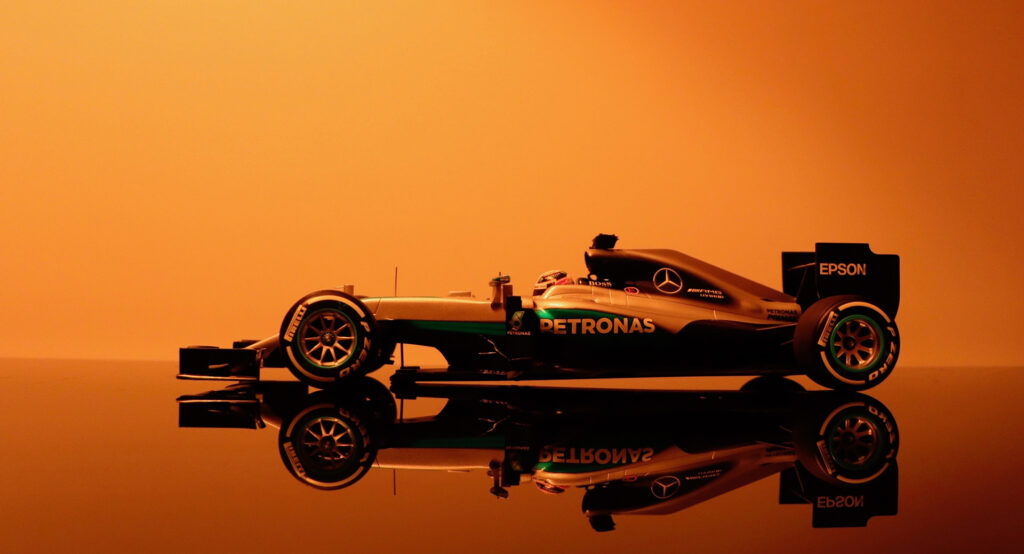
In Formula One (F1), there are strict weight limits that apply to both the car and the driver.
13 The total weight of the car, including the driver, must be at least 746 kg (1,645 lbs), and there are also minimum weight requirements that apply to the car’s individual components, such as the engine and the tires.
To enforce these weight limits, F1 teams are required to weigh their cars before and after each race, and any car that is found to be underweight is subject to penalties. Additionally, drivers who weigh less than the minimum weight limit are required to add ballast to their car to bring it up to the required weight.
This system is in place to ensure fairness and parity between drivers of different sizes and weights. In theory, a lighter driver would have an advantage over a heavier driver, as the car would be lighter overall. By requiring all cars to meet the same minimum weight, regardless of the size of the driver, the FIA (Fédération Internationale de l’Automobile) aims to level the playing field and create a more competitive sport.
However, the ballast penalty for lighter drivers has been criticized by some, as it can be seen as a disadvantage for drivers who are naturally smaller and lighter than their competitors. Despite this criticism, the weight limit system remains in place in F1, and teams must carefully balance the weight of their cars to ensure that they meet the required limits while also maximizing performance.
The Formula One (F1) qualifying session is a crucial part of the race weekend, as it determines the starting grid for the race itself.
14 During qualifying, drivers are given a set amount of time to complete a certain number of laps around the track, with the fastest driver securing pole position and starting from the front of the grid.
Qualifying is divided into three parts, with the slowest drivers being eliminated after each round. In the first round, known as Q1, all drivers are allowed to compete, with the slowest drivers being eliminated after a set amount of time. The remaining drivers then move on to Q2, where they compete to set the fastest lap times and secure a place in the final round, Q3.
In Q3, the top 10 drivers from Q2 compete for pole position, with the fastest driver securing the coveted spot at the front of the grid. The remaining drivers then line up in descending order based on their qualifying times, with the second-fastest driver starting from second place, and so on.
Starting from pole position can be a major advantage for a driver, as it allows them to dictate the pace of the race and potentially build up a lead over their competitors. However, starting further back on the grid doesn’t necessarily mean a driver can’t win the race – with skill, strategy, and a bit of luck, any driver has the potential to come out on top.
Formula One (F1) has a long and storied history, dating back to the inaugural season in 1950.
15 Over the years, the sport has seen many legendary drivers come and go, each leaving their own unique mark on the sport and contributing to its rich history.
Juan Manuel Fangio is widely regarded as one of the greatest drivers of all time, having won five World Championships in the 1950s. Ayrton Senna is another driver who is often cited as one of the best, having won three World Championships in the 1980s and early 1990s before his tragic death in 1994. Alain Prost, meanwhile, won four World Championships over the course of his career, cementing his place in the pantheon of F1 greats.
These are just a few examples of the many legendary drivers who have competed in F1 over the years, each bringing their own unique skills and personalities to the sport. Their contributions have helped to shape F1 into the thrilling, high-stakes competition that it is today, and their legacies continue to inspire and influence new generations of drivers and fans alike.



